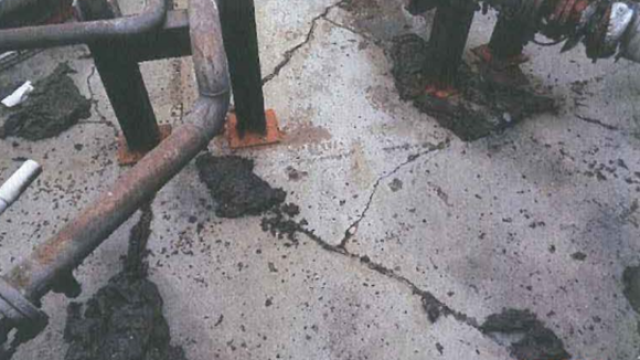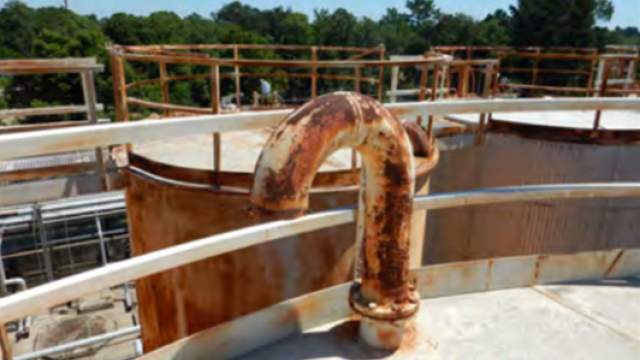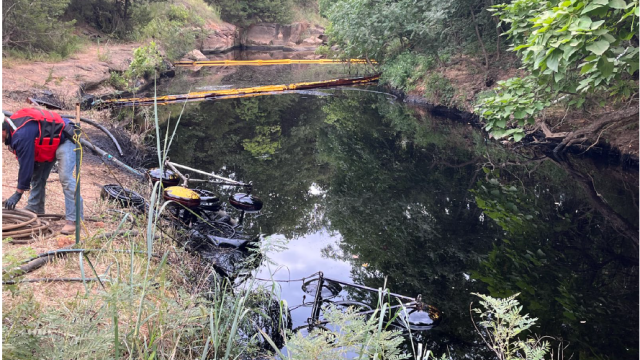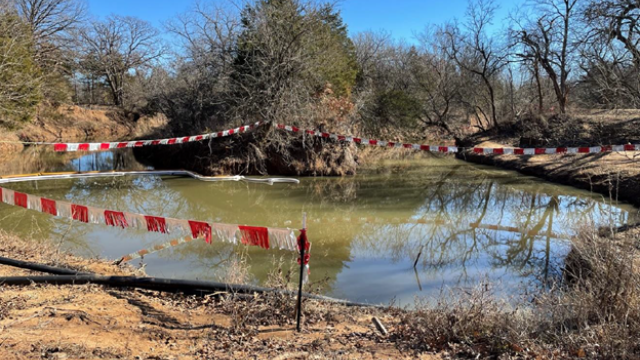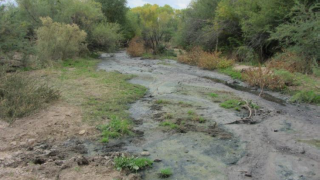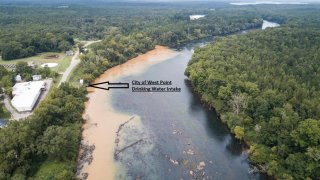Enforcement and Compliance Assurance Annual Results for FY 2024: Civil Enforcement
The Environmental Protection Agency’s civil enforcement program works diligently to fulfill the agency’s mission to protect human health and the environment by holding polluters accountable to ensure regulated entities follow our Nation’s environmental laws. EPA’s enforcement efforts are protecting communities, particularly those overburdened by pollution. Working with EPA’s criminal, cleanup, and federal facility enforcement partners, other federal agencies, as well as states, Tribes, and territories, EPA’s civil enforcement program provides tangible benefits for communities.
In April 2024, EPA issued the Strategic Civil-Criminal Enforcement Policy establishing a stronger partnership between the civil and criminal programs through enhanced strategic planning, rigorous case screening, regular communication, and use of appropriate enforcement tools. For the first time, the criminal enforcement program is working with the civil enforcement program to implement EPA’s national priorities and the FY2024-2027 National Enforcement and Compliance Initiatives or NECIs.
In fiscal year 2024, EPA’s civil enforcement program completed record-breaking, precedent-setting cases, including the largest Clean Air Act mobile source and stationary source settlements in history, transforming how we protect communities and provide clean air in the years to come. The agency completed 1,851 civil enforcement cases resolving tens of thousands of violations and noncompliance with environmental laws and regulations, which resulted in:
- Reducing, treating, or eliminating over 321 million pounds of pollution.
- Ensuring the proper treatment, minimization, or disposal of over 609 million pounds of hazardous and non-hazardous waste.
- Incorporating one or more supplemental environmental projects in 49 settlements, bringing relief valued at over $9.5 million to communities and the environment.
- Obtaining commitments of over $5 billion to return facilities to compliance.
- Assessing over $1.7 billion in penalties.
- Completing 60 civil judicial actions and continued oversight of over 500 judicial consent decrees.
Tackling the Climate Crisis
EPA’s civil enforcement program is ensuring cleaner air for communities and responding to the climate crisis by helping the Nation reduce emissions from greenhouse gases and climate super pollutants like methane and hydrofluorocarbons (HFC). Robust enforcement of Clean Air Act violations, deterring noncompliance across industry sectors, and assuring that facilities play by the rules are critical to reducing these emissions. EPA’s Mitigating Climate Change National Enforcement and Compliance Initiative and enforcement of the Renewable Fuel Standards underscore the agency’s commitment to addressing climate change.
Over the past year, EPA has taken enforcement actions against a multitude of industrial sectors under the climate change NECI, including oil and gas operators, landfill operators, and illegal importers of HFCs. The agency’s dedication to tackling the climate crisis is reflected by the reduction of over 1.2 million metric tons of carbon dioxide equivalent emission through these actions. Additionally, this year, EPA collected over $71 million in penalties to resolve Clean Air Act violations in settlements that reduced GHG emissions.
In September 2024, EPA issued an HFC enforcement alert that provides information on common compliance issues observed with the importation of bulk HFCs and highlights recent civil and criminal enforcement actions. The enforcement alert emphasizes that EPA is vigorously enforcing regulations and intends to ensure that regulated entities take the necessary steps to comply with the law and avoid potential enforcement actions.
Marathon Oil Settlement Results in Largest Stationary Source Penalty for Clean Air Act Violations
In September 2024, EPA and the Department of Justice finalized a first of its kind settlement with Marathon Oil Company resolving Clean Air Act violations at the company’s oil and gas production operations on the Fort Berthold Indian Reservation in North Dakota. The violations at nearly 90 Marathon facilities resulted in thousands of tons of illegal pollution, including smog-producing volatile organic compounds (VOCs) and carbon monoxide, which contribute to asthma and increase susceptibility to respiratory illnesses. Also, greenhouse gases, including the climate super pollutant methane, were released in large quantities, contributing to climate change.
Marathon will implement extensive compliance measures and mitigation activities to achieve major reductions in harmful emissions from over 200 facilities across the state as well as pay a $64.5 million civil penalty, the largest ever for violations of the CAA at stationary sources. The work that Marathon will do under this agreement will result in the equivalent of over 2.25 million tons of reduced carbon dioxide emissions over the next five years, similar to the number of reductions achieved by taking 487,000 cars off the road for one year. The settlement will also eliminate nearly 110,000 tons of VOC emissions. More information is available on the Marathon Oil Company Settlement Summary webpage and EPA and DOJ Announce $241.5M Settlement Agreement with Marathon Oil press release.
Apache Corporation Fined on Greenhouse Gas Emissions From Oil and Gas Wells
In April 2024, EPA and state of New Mexico reached an agreement with Apache Corporation for violations of Clean Air Act regulations at 23 oil and gas production facilities in New Mexico and Texas. As part of the settlement, Apache paid a civil penalty of $4 million and will bring 400 facilities across New Mexico and Texas into compliance with existing air regulations, along with mitigation activities. Apache also agreed to replace 400 pieces of equipment that release emissions with zero-emitting equipment to address the environmental harm caused by the violations, which is estimated to be over 9,650 tons of VOCs and 25,000 tons of GHG emissions, including methane. Volatile organic compounds are a key component in the formation smog, which exacerbates diseases including asthma and can increase susceptibility to respiratory illnesses, such as pneumonia and bronchitis. More information is available on the Apache Corporation Settlement Summary webpage and Apache Corporation to pay $4 million and reduce unlawful air pollution from oil and gas wells press release.
Colonial Oil Fails to Meet Clean Air Act Fuel Regulations
In September 2024, EPA and DOJ finalized a settlement with Colonial Oil Industries Inc., for failure to meet obligations under the Clean Air Act’s Renewable Fuel Standard or RFS program and gasoline volatility standards. As part of the settlement, Colonial paid a civil penalty of more than $2.8 million and will spend an estimated $12.2 million to offset the human health and environmental impacts of the violations.
Between 2013 and 2019, Colonial failed to purchase and retire enough Renewable Identification Numbers or RINs under the Renewable Fuel Standard (RFS) program. The RFS program is a national policy that requires a certain volume of renewable fuel be used to replace or reduce the quantity of fossil fuel in transportation fuel, home heating oil, or jet fuel. The settlement requires Colonial to purchase and retire over nine million RINs within two years, resulting in a reduction of over 18,300 metric tons of carbon dioxide equivalent emissions. This is equivalent to the emissions from powering 2,386 homes’ energy use or 4,355 gasoline cars for a year.
Colonial also sold over a million gallons of gasoline that failed to meet the applicable volatility standard intended to reduce emissions during the summer season. These emissions contribute to smog and ozone-related health problems such as asthma, emphysema, and chronic bronchitis. Read more: Colonial Oil to Pay $2.8 Million Penalty for Failure to Meet CAA Fuels Regulation press release.
Illegal Imports of Hydrofluorocarbons by Resonac America Inc.

In March 2024, EPA reached a settlement agreement with Resonac America Inc. for the illegal import of HFCs, a climate super pollutant, into the United States. Under the settlement, Resonac paid a $416,003 civil penalty and will safely destroy 1,693 pounds of HFCs. Resonac imported HFC-23, a potent greenhouse gas, with a global warming potential that is 14,800 times more than that of carbon dioxide over 100 years. This enforcement action prevented approximately 6,208 pounds, or 2.8 metric tons, of illegal HFCs from being imported into the United States. If released into the atmosphere, these HFCs are the equivalent of 41,677 metric tons of carbon dioxide, or the same amount of carbon dioxide produced from powering 8,225 homes with electricity for a year. Read more: Resonac Settlement for Import of HFCs press release
Read more about civil enforcement actions addressing climate change on the Fiscal Year 2024 Annual Results: Climate Change webpage.
Taking Decisive Action to Promote Environmental Justice
Through the enforcement of the Nation's environmental laws, EPA strives to make transformative progress on addressing unlawful violations in communities already overburdened by pollution. We do this in part by working with our state and local partners, including underserved and overburdened communities. In addition to the cases listed below, EPA issued a civil enforcement fact sheet to help communities understand EPA’s civil enforcement process and how the agency works to protect communities and those harmed or threatened by pollution. To read more about civil enforcement actions addressing environmental justice, please visit the Fiscal Year 2024 Annual Results: Environmental Justice webpage.
Applied Energy Systems to Pay $3.1 Million Penalty for Clean Air Act Violations at Coal-Fired Power Plant in Puerto Rico
In August 2024, EPA finalized a settlement with Applied Energy Systems Puerto Rico, LP (AES) for Clean Air Act violations at its facility in Guayama, PR. EPA found that AES did not properly monitor for mercury, soot-producing particulate matter, and dangerous hydrochloric acid emissions, and that it did not properly report hazardous mercury emissions. Exposure to these hazardous air pollutants is associated with adverse health effects such as irritation of the lungs and skin, detrimental effects on the central nervous system, damage to the kidneys, and cancer. As part of the settlement, the company will pay a civil penalty of $3.1 million and address violations of the Mercury and Air Toxics Standards (MATS). AES also agreed to operate two recently installed mercury process monitors to support the facility’s operation of its system to remove mercury from its emissions. To increase public transparency, the company will post its MATS compliance reports and its site-specific monitoring plan on its website. Read more: Applied Energy Systems Settlement for Violations in Guayama, PR press release.
Methane Emissions Controls Required for Allied Waste Niagara Falls New York Landfill in Settlement
In February 2024, EPA reached a settlement with Allied Waste Niagara Falls Landfill, LLC (Allied) for Clean Air Act violations at its landfill in Niagara Falls, NY. Under the settlement, Allied will pay a $671,000 penalty and operate a gas collection and control system to reduce the amount of harmful chemicals, primarily methane, as well as other harmful organic compounds, released into the air. In addition to causing adverse climate effects, these pollutants are known or suspected to be carcinogens and to cause damage to the kidneys, liver, and central nervous system. In addition to the estimated elimination of 86,000 metric tons of carbon dioxide equivalent methane emissions, the gas collection and control system, along with operational changes, will prevent an additional 32 metric tons of non-methane landfill gas emissions per year. These improvements also will provide safeguards from toxic releases to air to benefit the health of the people working and living near this landfill. This work is also part of EPA’s Mitigating Climate Change NECI. Read more: Allied Waste Resolves Clean Air Act Violations at its Niagara Falls Landfill press release.
County of Hawai’i Required to Address Compliance Issues at Three Wastewater Treatment Plants
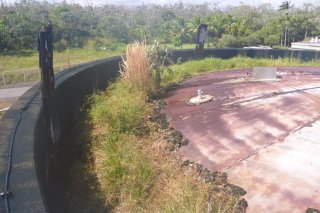
In March 2024, EPA finalized a settlement agreement with the county of Hawai’i to ensure that Clean Water Act pollution discharge requirements are met at the Hilo, Pāpa‘ikou, and Kula‘imano Wastewater Treatment Plants. EPA identified significant operation and maintenance issues that affected the treatment systems, leading to violations of the limitations on what the plants can discharge, as well as sewer overflows. EPA worked with the county and Hawai’i Department of Health to identify needs for capital improvements and strengthen planning efforts and asset management of the County’s wastewater infrastructure systems.
The settlement requires the County to address broken equipment and deferred maintenance and to develop a program to systematically repair, rehabilitate, and replace its aging infrastructure. These improvements are expected to benefit the surrounding community, which has been overburdened by environmental and health hazards, by reducing potential human exposure to contaminated sewage on the beaches, streams, and ocean waters throughout the Island of Hawai’i. Exposure to sewage can lead to gastrointestinal illnesses, due to the presence of harmful microorganisms like bacteria, viruses, and parasites which can cause symptoms like diarrhea, nausea, vomiting, or cramps. Read more: EPA Addresses Violations Involving Hawaii Wastewater Treatment Plants, Sewer Lines press release.
Identifying and Controlling PFAS Contamination
For the first time, EPA is focusing its enforcement and compliance assurance resources on addressing per-and polyfluoroalkyl substances or PFAS contamination. Known as “forever chemicals,” PFAS’ toxicity and persistence in the environment and the breadth and scope of contamination throughout the country make it a national threat worthy of being an NECI. The agency’s Addressing Exposure to PFAS National Enforcement and Compliance Initiative (NECI) is focused on using EPA’s various enforcement tools to achieve site characterization, control ongoing releases that pose a threat to human health and the environment, ensure compliance with permits and other agreements to prevent and address PFAS contamination, and address endangerment issues as they arise. The cases below highlight EPA’s initial work with large manufacturing companies and the U.S. Army to gather the data necessary to address the risks and harms from and clean up PFAS contamination.
Chemours Company Addresses PFAS Contamination in Washington Works Facility in Settlement
In December 2023, EPA and Chemours Company FC, LLC reached an agreement to conduct sampling for PFAS surrounding the company’s Washington Works facility in Washington, West Virginia, under the Resource Conservation and Recovery Act. Under the agreement, Chemours is required to collect and analyze samples in soil, surface water, sediment, and other areas to provide information on known and potential PFAS contamination. More information on the site is available in EPA Secures Agreement with Chemours for PFAS sampling press release and the agency's Chemours corrective action webpage.
EPA and U.S. Army Collaborate to Identify PFAS Contamination Near Army Installations
In FY 2024, EPA conducted sampling of private drinking water wells located near five military bases: Fort Carson (Colorado), Camp Santiago and Fort Allen (Puerto Rico), and Nellis Air Force Base and Reno Air National Guard Base (Nevada). This sampling, conducted as part of EPA’s Addressing Exposure to PFAS National Enforcement and Compliance Initiative, is in close collaboration with states, territories and the Department of Defense. More information on this effort is available on the Federal Facilities FY 2024 Annual Results webpage.
Superfund Enforcement Program Initiates PFAS Sampling and Data Collection
In FY 2024, five EPA regional offices conducted sampling to collect PFAS contamination data at eight major PFAS manufacturing facilities located in five states and Puerto Rico. In addition to those sampling efforts, the cleanup enforcement program compiled publicly available PFAS data from three other facilities. The sampling data will assist EPA in understanding the extent of PFAS contamination at some of the largest facilities in the United States and enable early action to address any imminent and substantial endangerment posed by the chemicals.
Protecting Communities from Hazardous Waste
In FY 2024, EPA continued to hold polluters accountable for violations of Resource Conservation and Recovery Act’s regulations. For the first time, EPA designated coal ash surface impoundments and landfills as one of the agency’s NECIs. Coal ash, also known as coal combustion residuals or CCR, is a large industrial waste stream produced from the burning of coal for energy. It contains harmful contaminants that may cause cancer and other health effects.
Without proper containment and management, coal ash can pollute waterways, groundwater, drinking water and the air. Improper storage of coal ash can also result in catastrophic failures. Coal ash disposal impoundments and landfills are found throughout the country in both urban and rural areas. Impacts from catastrophic releases, as well as contamination leaking into potential drinking water sources, have and will continue to be felt by surrounding urban and rural communities until the coal ash is properly contained, controlled, and cleaned up. Through this NECI, EPA is protecting water sources, as well as overburdened and underserved communities who often live near coal ash disposal and storage units. More information on EPA’s efforts to address coal ash contamination is available on the Coal Ash Contamination NECI webpage.
First Coal Ash NECI Settlement Requires Greenidge Generation LLC to Address Contamination at New York Power Plant
In January 2024, EPA finalized the first settlement under the agency’s coal ash contamination NECI with Greenidge Generation LLC, an electrical generating plant in Dresden, NY. Under the settlement, the company must address groundwater monitoring and ensure the proper closure of a coal ash surface impoundment. Greenidge will also pay a $105,000 fine. Read more: EPA Settlement with Greenidge Generation to Address Compliance with Coal Ash Regulations press release.
EPA Finalizes Four Settlements in three states and Puerto Rico to Advance Coal Ash NECI
In September 2024, EPA finalized four settlements under the Resource Conservation and Recovery Act for violations of coal ash regulations at facilities located in Alabama, Pennsylvania, Colorado, and Puerto Rico. An overview of these settlements is provided below:
-
AES Puerto Rico will address groundwater monitoring issues at their electrical generating plant in Guayama, PR, and ensure proper reporting of its coal ash landfill. The company will pay a civil penalty of $71,845.
-
Keystone-Conemaugh Projects, LLC committed to ensuring that groundwater at its coal-powered Conemaugh Generating Station in New Florence, Pennsylvania, is properly monitored and remediated. The company will pay a civil penalty of $185,927.
-
The Alabama Power Company agreed to evaluate and expand its groundwater monitoring program at the Barry Electric Generating Plant in Bucks, Mobile County, AL, and to review and upgrade its Emergency Action Plan. The company will pay a civil penalty of $278,000.
-
The Public Service Company of Colorado is required to address groundwater monitoring issues, to conduct effective and protective groundwater cleanup at the Cherokee Station electrical generating plant in Denver, CO. The company will pay a civil penalty of $134,500.
Heritage-Crystal Clean, LLC to Implement Compliance Measures for Violations of Hazardous Waste Regulations
In December 2023, EPA, DOJ, the Louisiana Department of Environmental Quality, and the state of Indiana reached a settlement with Heritage-Crystal Clean, LLC (HCC) for violations of requirements governing the management of hazardous waste and used oil at current and former facilities. HCC accepted used solvent that qualified as hazardous waste but did not transport and manage those solvents in accordance with applicable hazardous waste management requirements. HCC’s actions occurred in the course of providing parts-washing services to customers throughout the United States. Under the settlement, HCC committed to pay civil penalties totaling $1,162,500 and to implement various compliance measures, including promptly removing from its facilities the specific solvent drums and consolidation containers that exhibit hazardous waste characteristics. This settlement resulted in over 16 million pounds of hazardous waste being treated, minimized, or properly disposed of—the most significant environmental benefit result in RCRA enforcement to date. More information is available on the HCC Company Settlement case summary and the Heritage-Crystal Clean, LLC pays penalty and implements compliance measures for hazardous waste violations press release.
Protecting the Public from Toxic Lead Exposure
The legacy of toxic lead exposure disproportionately affects communities with a higher concentration of low-income households. Even very low levels of lead in children’s blood have been linked to adverse effects on intellect, concentration, and academic achievement, which could lead to lifelong health effects and barriers to social and economic well-being.
In FY 2024, EPA continued its work to implement the agency’s strategy to Reduce Lead Exposures and Disparities in U.S. Communities, focusing on high risk or overburdened communities. To address community exposures to lead sources, EPA's enforcement program has pursued civil cases and signed agreements to support EPA’s commitment to the Lead Strategy, which are highlighted below. For more information on lead enforcement accomplishments, visit EPA’s Enforcing Lead Laws and Regulations webpage.
EPA-HUD Agreements in Support of EPA’s Lead Strategy and the Federal Lead Action Plan to Reduce Childhood Lead Exposures
In February 2024, EPA signed two complementary agreements with the U.S. Department of Housing and Urban Development (HUD) to support commitments in EPA’s Lead Strategy, Federal Action Plan to Reduce Childhood Lead Exposures, and EPA’s Strategic Plan, which seek to protect children’s health by reducing lead exposures locally, with a focus on disproportionately impacted communities.
-
The first MOU strengthens EPA-HUD lead paint compliance and enforcement partnership through increased consultation, information-sharing, and mutual assistance to maximize our coordinated efforts to address lead-based paint hazards in housing.
-
The second MOU, signed by EPA, HUD, and the Centers for Disease Control and Prevention (CDC) launches a pilot program in EPA’s Mid-Atlantic Region (Delaware, the District of Columbia, Maryland, Pennsylvania, Virginia, and West Virginia) to facilitate collaboration and information sharing about communities with children who are testing with elevated blood lead levels or higher lead exposure risks to help prioritize the agencies’ actions in communities with the greatest risks.
Settlement with Marrs Construction Co. Addresses Renovation, Repair, and Painting Rule Protections Against Lead Exposure
In January 2024, EPA entered into a settlement agreement with Marrs Construction Co., of Bella Vista, AR, which addressed the company’s violations of the Lead Renovation, Repair and Painting (RRP) Rule. In 2018, Marrs performed two renovations at residential properties without complying with applicable RRP Rule requirements, specifically failing to:
- Obtain recertification before beginning renovations,
- Assign a certified renovator to each renovation,
- Maintain records showing their compliance with the RRP measures, and
- Perform work in accordance with applicable work practice standards.
Marrs paid a $35,000 penalty and is required to provide information about lead safety rules on “Fixer to Fabulous,” its program on the Home Garden Television (HGTV) Network and through Marrs’ social media sites. Read more: EPA Settlement Addresses Contractor’s Actions on Renovation TV Show Violating the Lead-Based Paint Rule press release.
J. Da Silva Properties, LLC to Address TSCA Lead Disclosure Rule Violations Under Consent Agreement
In May 2024, EPA filed a consent agreement and final order against J. Da Silva Properties, LLC regarding violations of the Lead-Based Paint Disclosure Rule under Section 1018 of the Residential Lead Based Paint Hazard Reduction Act. The Disclosure Rule ensures that purchasers and renters of housing built before 1978 receive the information necessary to protect themselves and their families from lead-based paint hazards. The company owns six housing buildings, totaling 39 units, in Danbury, CT, and failed to provide the appropriate information to multiple lessees. As part of the settlement, the company paid a cash penalty of $68,078. Additionally, the company will implement a supplemental environmental project valued at about $44,000 at two of its properties to remove, dispose, and replace lead-based paint containing materials and certify compliance with the Disclosure Rule. Read more: Connecticut Property Owner to Pay Penalty and Perform Lead Abatement for Violations of Lead-based Paint Rules press release.
Emissions from Defeat Devices in Diesel Engines
To ensure clean air, EPA regulates emissions from diesel engines used in various passenger and commercial vehicles, as well as machines that perform a wide range of important jobs such as excavators, farm tractors, forklifts, and other “nonroad” equipment. Though diesel engines manufactured today are cleaner, diesel exhaust still contributes significantly to air pollution that causes serious human health and environmental effects. The following settlements highlight EPA’s enforcement against companies that install and sell illegal defeat devices for diesel engines:
Record Setting Civil Penalty Against Cummins Inc. in Vehicle Test Cheating Settlement
In January 2024, EPA, DOJ, the California Air Resources Board, and the California Attorney General’s office finalized a settlement agreement with diesel engine maker Cummins Inc. for alleged violations of the Clean Air Act and California law, which included the use of software “defeat devices” that circumvented emissions testing and certification requirements. As part of the settlement, Cummins paid a $1.675 billion civil penalty—the largest ever assessed in a Clean Air Act case—and agreed to spend more than $325 million to remedy the violations. Cummins must also complete a nationwide vehicle recall to repair and replace the engine control software in hundreds of thousands of vehicles equipped with the company’s diesel engines. Cummins must also extend the warranty period for certain parts in the repaired vehicles, fund and perform projects to mitigate excess ozone-creating nitrogen oxides (NOX) emitted from the vehicles, and employ new internal procedures designed to prevent future emissions cheating. NOX emissions can aggravate respiratory diseases, particularly asthma, and may also contribute to asthma development in children.
More information is available on the 2024 Cummins Inc. Settlement case summary and the Cummins Inc. Agrees to Pay a Record $1.675 Billion Penalty in Vehicle Test Cheating Settlement press release.
Tadano Group fined $40 Million for Selling Noncompliant Diesel Engines

In October 2023, EPA and DOJ entered into a settlement with Tadano Ltd. and its subsidiaries (Tadano Group) for Clean Air Act violations including the importation and sale of nonroad cranes with diesel engines not certified to applicable emission standards, and the release of excess carcinogenic diesel exhaust containing NOX and particulate matter (PM). Tadano Group will pay a $40 million civil penalty and spend approximately $3 million on a project to mitigate the harm caused by excess NOX and PM emissions from its noncompliant crane engines. This project will prevent the release of an estimated 2,075 tons of NOX emissions and more than 22 tons of PM emissions over 20 years. Read more: Tadano Group to Pay $40 Million to Settle CAA Violations After Selling Noncompliant Diesel Engines press release.
Calibrated Power Solutions Provides EPA Certified Emission Standard School Buses in Settlement
In December 2023, EPA and Calibrated Power Solutions, Inc. reached a settlement for violations of the Clean Air Act regarding the sale of products designed to defeat required emissions controls on vehicle engines. The company agreed to spend $276,400 on a supplemental environmental project to replace two of the local school district’s diesel school buses with two new buses certified to EPA emission standards. Reducing exposure to diesel exhaust from these engines is especially important for human health and the environment; exposure to diesel exhaust can lead to serious health conditions like asthma and respiratory illnesses, especially in children and the elderly. Emissions from diesel engines contribute to the production of ground level ozone (smog) and acid rain. More information is available on the Calibrated Power Solutions Final Order settlement agreement.
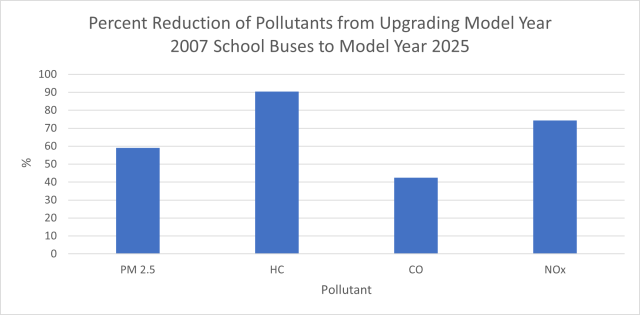
Protecting Tribal Communities and Land from Pollution
EPA is committed to ensuring compliance in Indian country and protecting the public health of Tribal communities who are often disproportionately overburdened by pollution. These settlements have contributed to ensuring cleaner and healthier air, land, and water for Tribal communities:
Holly Energy Partners-Operating L.P Address Clean Water Act Violations in Pipeline Spill
In January 2024, EPA and DOJ reached a settlement agreement with Holly Energy Partners-Operating L.P. and Osage Pipe Line Company LLC for Clean Water Act violations caused by a 2022 pipeline rupture and crude oil spill from the Osage pipeline onto land owned by members of the Sac and Fox Nation in Oklahoma. The spill released about 300,000 gallons of crude oil, contaminating Skull Creek, and severely hampering water quality and the aquatic environment in the creek. The companies are required to complete the cleanup and remediation of the impacted area, improve their pipeline integrity management program, provide additional training for all their control room operators, and expand their spill notification efforts for Tribal governments with land interests within the footprint of the pipeline, in addition to paying a $7.4 million penalty. Read more: Oil Companies to Pay $7.4 Million for Pipeline Spill on Allotted Tribal Land press release.
Navajo Tribal Utility Authority to Make Improvements to Wastewater Treatment Plants
In August 2024, EPA finalized a partial consent decree with the Navajo Tribal Utility Authority (NTUA) to improve wastewater treatment at its Chinle, Kayenta, and Tuba City facilities in Arizona. NTUA violated its Clean Water Act permits by regularly discharging wastewater that had not been treated to the required permit standards, and by failing to properly operate and maintain the facilities’ sewer systems to prevent sewage spills. In addition to the negative impact on aquatic life, spills and overflows from sewer pipes can expose people to untreated sewage, which may contain viruses, bacteria, or parasites that can make people ill. As a result of this settlement, EPA estimates a significant reduction of sanitary sewer overflows and other potential permit violations. Upgrades to the wastewater collection and treatment systems will result in cleaner and healthier water for approximately 20,000 individuals across four communities within the Navajo Nation.
The settlement puts NTUA on a schedule to conduct major improvements to its wastewater treatment plant collection systems at a cost of approximately $100 million, and requires interim compliance measures, including studies and surveys, to determine necessary upgrades to wastewater treatment plant collection systems to address sanitary sewer overflows and wastewater treatment at its Chinle, Kayenta, and Tuba City facilities located on the Navajo Nation. Read more: NTUA agrees to $100 Million in Wastewater Treatment Improvements press release.
San Carlos Apache Tribe Agree to Bring Drinking Water and Wastewater Systems into Compliance
In August 2024, the San Carlos Apache Tribe agreed to continue its work to bring the San Carlos Wastewater Treatment Facility, and three drinking water systems owned and operated by the Tribe into compliance with the Clean Water Act and the Safe Drinking Water Act. Violations were identified by the Tribe and brought to the attention of EPA. Under the agreement, the Tribe will submit a compliance plan detailing the steps it will take to prevent future unauthorized discharges and corrective action plans that will guide the specific work needed to address significant deficiencies identified in 2022 at the Upper Seven Mile, Bylas, and Lower Peridot drinking water systems. This action is a significant step toward ensuring the health and safety of its community and signifies the Tribe's commitment to meeting the standards set by these crucial environmental laws. Read more: San Carlos Apache Tribe to Bring Wastewater and Drinking Water Systems into Compliance press release.
Bureau of Indian Affairs to Clean Up and Close Tuba City Dump in Settlement
In May 2024, EPA and the U.S. Bureau of Indian Affairs (BIA) agreed to a settlement under the Resource Conservation and Recovery Act to properly clean up and close the Tuba City Dump site. The site is located near the villages of Upper and Lower Moenkopi on the Hopi Reservation and Tuba City on the Navajo Nation.
EPA initiated this enforcement action to ensure that the BIA handles, stores, treats, transports, and disposes of any solid waste that may impact human health or the environment. As part of that agreement, the BIA will transfer the wastes off Tribal lands, backfill the site with clean fill material, and provide routine groundwater monitoring. Read more: EPA and Bureau Of Indian Affairs Agree on Cleanup Plan for Tuba City Dump press release.
Protecting Waterbodies from Stormwater Runoff
Stormwater runoff is generated from rain and snowmelt events that flow over land and pick up pollutants like trash, chemicals, oils, and dirt/sediment that contaminate our rivers, streams, lakes, and coastal waters. Impacts of more frequent and intense storms and extreme flooding events increase stormwater runoff and exacerbate existing, or introduce new, pollution problems.
EPA’s National Pollutant Discharge Elimination System or NPDES permitting program regulates stormwater runoff from municipal separate storm sewer systems, industrial activities, and construction activities. In FY 2024, the following cases highlight EPA’s civil enforcement efforts to address stormwater pollution associated with construction projects.
Swinerton Builders to Address Stormwater Runoff Pollution at Solar Farm
In July 2024, EPA, DOJ, and the states of Alabama and Illinois finalized a settlement with Swinerton Builders, a national construction company, for Clean Water Act and related state law violations for illegal sediment discharges. The company released significant amounts of sediment into nearby waterways during its construction of four large solar farms in Alabama, Illinois, and Idaho. Solar farm construction involves clearing and levelling large sections of land, which can lead to significant erosion and major runoff of sediment into waterways. If stormwater controls at the site are inadequate, it can lead to injury, suffocation, or killing of aquatic life, damaging aquatic ecosystems, and causing significant harm to drinking water treatment systems. Under the settlement, Swinerton Builders agreed to pay a civil penalty of $2.3 million and to undertake approximately $1.7 million in mitigation projects, which were developed with input from local communities and the Shoshone-Bannock Tribes, to help restore the Portneuf River in Idaho and to purchase stream credits to improve the watershed of the Chattahoochee River in Alabama. Read more: Swinerton Builders Agreement with EPA for Clean Water Act Violations at Solar Farm Construction Sites in Three States press release.
D.R. Horton to Implement Stormwater Compliance Programs at Home Construction Sites in Settlement
In April 2024, EPA and D.R. Horton, Inc., the nation’s largest homebuilder, reached a settlement agreement for Clean Water Act violations related to stormwater discharges associated with construction activity at 16 locations in Alabama, North Carolina, and South Carolina. In addition to implementing a stormwater compliance program at the sites, Horton will spend at least $400,000 on a supplemental environmental project using green infrastructure practices to improve water quality by decreasing pollutant loads in stormwater runoff through increases in stormwater infiltration. Read more: EPA Settlement with D.R. Horton for Clean Water Act Noncompliance press release.


